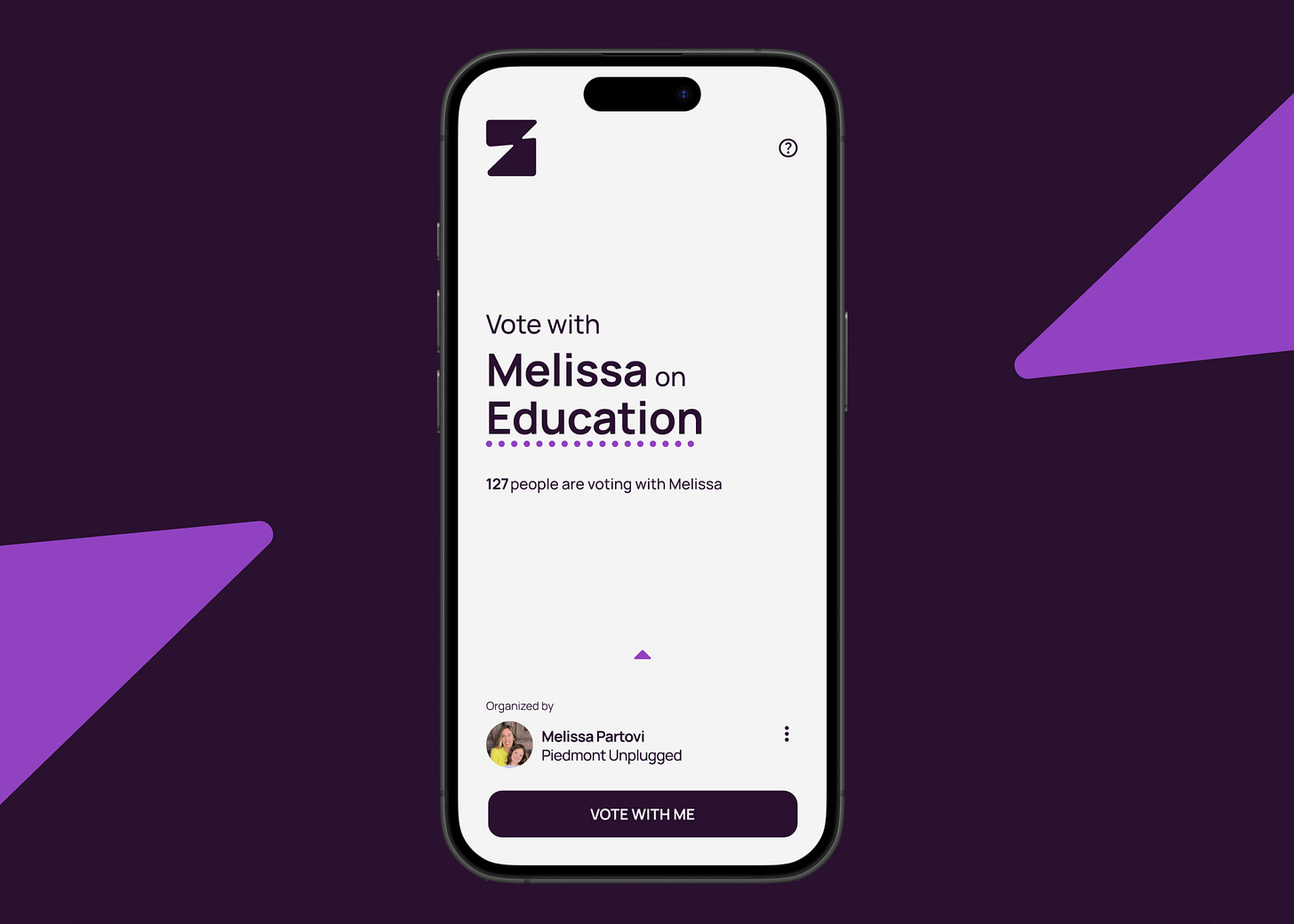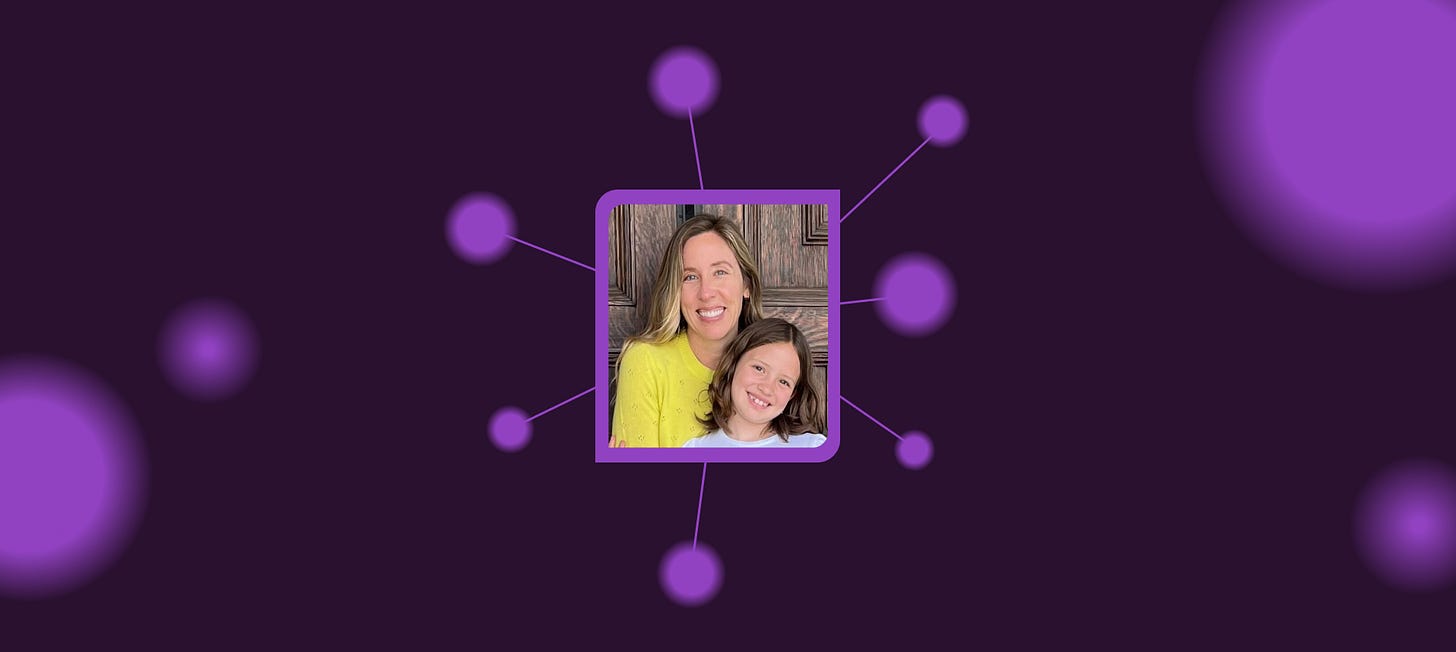Sway: a plan to reimagine democracy.
I’m starting the most ambitious project of my life: a tech platform to reimagine democracy.
I know you've probably got opinions on this – please give feedback and maybe join us.
This is personal for me. Throughout my life, I’ve spoken out on political topics — both in my work launching Code.org, and on various issues from local to national and international. Whether I was right or wrong, winning or losing, I felt a deeper frustration: the system sucks.
If you think politics is hopeless, you're not alone. As a child from Tehran who saw the 1979 Islamic revolution, I know how much worse it can get. It’s time to make democracy better, and there is hope.
What would representative democracy look like if it were invented today?
I’m starting Sway, a powerful new network for people to organize around shared views. Led by my long-time colleague Claire and cofounders Kayla and Prachi, Sway will start with a humble focus: a new way for local organizers to advance local causes by uniting voters. These groups will connect in an organic network that informs how people vote and impacts election outcomes. If this network grows large enough, Sway has the potential to shift the balance of power to the people and restructure the fabric of democracy.
To succeed, this plan needs: 1) a compelling value proposition at the small scale; 2) a distribution mechanism to make it spread; and 3) the power to cause systemic change at scale.
A new way for voters to unite
If you've ever tried to change anything related to government, you know how frustrating it is. Elected officials don't really listen to you and me; they listen to special interest groups whose support they need to stay in power (labor unions, lobbyists, etc). What if you and I could wield similar influence by joining voices with other citizens in a new way?
This is where Sway comes in. The atomic transaction of Sway is Vote with [Person] on #Topic. For example, you might click to Vote with Melissa on #Education or Vote with Bob on #Housing. This simple concept has the potential to give citizens unprecedented power.

When you click to Vote with Melissa on #Education:
- We’ll verify your identity as a registered voter. Melissa can see a tally of how many registered voters are voting with her (“Sway Score”).
- We’ll alert you at election time with Melissa’s #Education voter guide, including ballot recommendations and tweet-length explanations.
- You can be a leader too: if you want, recruit your own followers and rebroadcast Melissa’s voter guide to them. Every follower can also be a leader, resulting in a network.
Both sides benefit from this transaction. Leaders gain influence, and followers gain a way to align their votes with individuals they trust and causes that matter to them.
Voting is hard! Beyond major offices like President, who has time to study all the local options like county sheriff and school board? Most of us are passionate about specific causes, yet don’t know how to connect the dots to those causes when we vote.
We want a shortcut. For example, just choose Democrats or Republicans, then vote D or R down the ballot. Political parties, labor unions, and lobbies like the NRA all serve this need. They unify people around shared issues, and they send out voter guides.
Sway is the modern alternative to these legacy orgs. We’ll enable the same thing on a much more personal, granular level. You might not align with a party on everything. Wouldn’t you prefer to vote with someone you trust on the specific issues you care about? Vote with multiple leaders and get a personalized Sway voter guide that combines their recommendations. Like investing in a portfolio, spread your vote among the causes and people that matter to you.1
Voting with a leader will make you feel empowered too. You're uniting with others to give someone you trust a bit of power to make change on your behalf.
Stage 1: A platform for local influence
Even on a small scale, Sway empowers citizens. With enough followers, an ordinary citizen can wield extraordinary influence when advocating for their cause.
For illustration, consider my wife Melissa Partovi, a passionate parent in Piedmont, California, whose organization, Piedmont Unplugged, wants the local public schools to be phone-free. She might speak to the Piedmont Board of Education only to be ignored.
Using Sway, she can change the game by recruiting others to Vote with Melissa on #Education. If she amasses 100 Piedmont voters, she’ll get the board’s attention, because she’s no longer just a lone citizen. Her #Education voting guide will reach 100 subscribers, potentially enough to swing the next election.2
If voting alerts and ballot recommendations can decide election outcomes, Sway’s impact will extend far beyond. All year round, Sway will empower organizers like Melissa to demand meaningful change from policymakers, and Sway Score will become a new currency for power.

Our focus on local organizers like Melissa is also a key distribution strategy. Leaders like her will promote Sway just as they promote online petitions. They’ll have extra motivation to use Sway, because unlike a petition, the verified voter constituency will endow them with outsized, lasting influence.
As more and more people form organic connections on Sway, we'll build a network uniting millions of citizens in interconnected coalitions.
Stage 2: Expanding to regional levels and beyond
The granular example above is the building block for a larger network. As Sway groups interconnect and leaders join forces, they’ll pave new paths to advance popular causes.
Any leader can themself become a follower. If a local leader decides to Vote With a regional leader, the regional leader’s voting recommendations will pass through to the local followers.
In the last example, Melissa may want to align with a national figure such as Jonathan Haidt of The Anxious Generation. Assuming Haidt has a Sway profile, Melissa would click Vote With Jonathan on #Education. Now Haidt’s voter guide will go to Melissa’s followers, and all her Piedmont voters will add to Haidt’s Sway Score.
This empowers Haidt to advocate for phone-free schools not only in his local state of New York, but also in California and even nationally. As Haidt accumulates enough voters in California, he can contact a California lawmaker and ask them to support a statewide bill for phone-free schools, and so on.3

Have you ever felt that a cause you cared about was excluded from the prevailing political dialogue? Sway gives you a platform to join forces with others and advance your ideas at every level, ultimately empowering anybody to become a national leader.
Stage 3: Power to the people
Sway will hit an inflection point at critical mass. It will start helping a few groups amplify their influence. This will attract other groups, including opposing causes competing for voters (the platform itself must remain neutral). Eventually, if Sway reaches a representative cross-section of all voters in any jurisdiction, it will resemble liquid democracy and unlock systemic change.
At critical mass, elected officials will see Sway as a valuable and necessary resource to listen to you and me (their constituents) instead of inaccurate polls.
What if we could directly predict election outcomes based on Sway followers? The more people use Sway, the better these predictions. One day, Sway could tell a candidate running for office whether they’re going to lose, and precisely which causes and citizen leaders they must embrace to win. This would be an indispensable service to any elected official.
As politicians use such a service, their role will shift to serving you and me — rather than serving party bosses, labor unions, corporations, and other special interest groups that currently dominate government. The ultimate impact will be to return power to the people.
At scale, Sway’s network can become a complete digital representation of the public will. What if different Sway leaders negotiated compromises and formed coalitions akin to a parliamentary system? Can Sway reduce the impact of money in politics, since money is mainly used to influence votes? Can we someday decouple government from location, since like-minded individuals can back each other on Sway regardless of where they live? How far can Sway go internationally?4 As more and more people use Sway, who has more power: elected officials, or the Sway leaders who have the influence to elect them?
This is the start.
I don't know the future. I didn't come here to tell you how this is going to end. I came here to tell you how it's going to begin.
Self-government is one of the most important concepts in human history. It’s just really hard to accurately determine the collective will of a large group. If you’ve ever tried to order pizza for a dozen people, you know what I’m talking about. Technology can go a long way to help.
Our team is building Sway in San Francisco. While there’s a lot to figure out, we've made some foundational decisions.
We’re committed to serving as a neutral communication platform, not a tool for the left or the right: we won’t amplify, suppress, or editorialize. We’re committed to privacy and trust: followers can always remain anonymous, and leaders will never be anonymous. We're structuring Sway as a for-profit startup funded by Neo and me (possibly a public benefit corporation). We don’t plan to generate revenue anytime soon. The network we’re building will have immense value, and we want to be mindful of the undue influence of money before accepting any revenue. Our priority is to drive adoption and reach a critical mass of voters.

In summary, the plan is:
- Start local as a platform for influence based on people voting with each other.
- Allow organic coalitions to connect and expand to ever larger regions.
- Reach critical mass and enable systemic change that realigns government to the will of the people.
Like any other startup, we’re going to make some mistakes and learn a ton along the way. We want your help and feedback. Let us know what you think, join the waitlist, and tell your friends.
Notes:
- What if you follow two different leaders who send you conflicting ballot recommendations? The simple solution is to show you both recommendations and let you decide. Ideally, each leader would add a short sentence or two explaining each of their voting recommendations. This will help you make the most informed decision. On the backend, tallying Sway Score needs to factor in such conflicts when estimating how many votes a given leader can influence.
- Sway’s initial impact might be most pronounced in primary elections. For many local seats in the U.S., the primary election is more significant than the general election. Also, the voter turnout is lower in primary elections, so Sway alerts that drive turnout can have more impact. The margin of victory for elected offices in some of America’s largest cities can be as low as 100 votes.
- Just as a local leader can join a national leader’s larger coalition, the same mechanism can also flow in the opposite direction, allowing a national organizer to empower local leaders for local advocacy. In our example, after Haidt has accumulated followers in California, he could pass through those voters to a local delegate – perhaps Bill Ready. Then Bill would write the voter guide to be sent to all of Haidt’s California followers.
- These mechanisms are universal and not limited to a country. We’re starting Sway in the U.S. with the hope of expanding someday wherever it’s legal to do so. Information is power, and technically, all Sway does is let voters subscribe to receive other people’s opinions to inform their vote. This simple concept has world-changing potential. In our example, a voter in Paris or Prague might support phone-free schools. If Haidt has followers from a country, he can influence that country’s policy – by sending its citizens an #Education voter guide that aligns with their values. In theory, any person can impact policy worldwide on a topic they’re passionate about.

